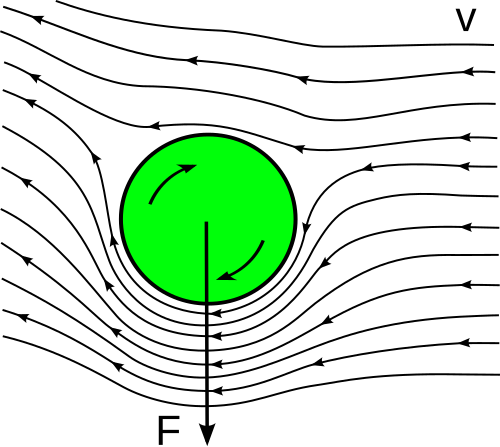A previous post by a student in last quarter’s class briefly discusses the autorotation abilities of the maple samara, then talked about a monocopter based on the samara’s design. The maple samara is certainly fascinating – but it is not the only seed with interesting aerodynamic properties. In fact, it is described as “crude” in relation to some other gliding and rotating seeds due to its inferior symmetrical airfoil (Alexander 51). I’d like to talk about the aerodynamics of some other types of gliding and rotating seeds.
A samara is merely a seed that develops a winglike shape attached to it. It is widely accepted that samara-producing plants evolved as an tradeoff: the resources required to produce a wing several times larger than the seed could be put to making more seeds, but seeds that get spread by the wind have a much higher chance of producing a viable plant. (Benkman). Many samaras are not capable of gliding or even efficient autorotation; however, simply being draggy is a huge adavantage. Distance traveled is equal to time times velocity, so for a given wind speed a slower-falling seed will spread further and thus be less likely to compete with its siblings for nutrients and water. (Benkman).
(All files are free-use images from Wikimedia Commons, available under attribution-sharealike licenses. Click on them for larger sizes, author information, and the full licenses.)
Ash seeds are capable of an unusual type of autorotation. Instead of generating lift with a miniature wing, it is shaped as an elongated cylinder. When it falls, small imperfections on its surface cause it to start spinning, and due to the Magnus Effect that spinning generates lift. The Magnus Effect is a not-wholly-understood effect caused by a body spinning in a viscous fluid, where drag effects cause a force perpendicular to the spin axis. It’s why curveballs curve, and why backspin causes a golf ball to carry further, and why ping-pong players can pull off ridiculous shots. In this case, it greatly impedes the fall of the ash seed, causing it to drift further (Alexander 53).
The champion of aerial samaras, though, is the Javan Cucumber, Alsomitra macrocarpa, a vine in the pumpkin family. It forms a wing up to 13cm (five inches) across. The glide ratio is as high as 4:1 and its drop speed just 0.3 to 0.7 meters per second (Azuma); thus, from a 30-meter tree, a seed can glide 120 meters (400 feet) and stay aloft for over a minute – and those numbers can easily increase by orders of magnitude with a strong wind, as like a glider the samara can ride the wind to gain altitude. It formed one of the earliest examples of biomimetics when in 1904 Austrian inventor Igo Etrich used it as the basis of a stable wing design, the ancestor of today’s flying wing bomber designs. (Vincent).
This is just a sampling of the great variety of aerial seeds. Many flowers like dandelions have their seeds drift on the wind. Thai plants related to poison ivy deploy multiple blades to spin to the ground. And tumbleweeds use the wind to uproot the whole plant to spread seeds! (Armstrong)
Sources
- Alexander, David E. and Vogel, Steven. “Nature’s Flyers: Birds, Insects, and the Biomechanics of Flight“. JHU Press, 2004.
- Benkman, Craig W. 1995. “Wind dispersal capacity of pine seeds and the evolution of different seed dispersal modes in pines“. – Oikos 73: 221-224
- Azuma, Akira and Okuno, Yoshinori. “Flight of a samara, Alsomitra macrocarpa“. Journal of Theoretical Biology. Volume 129, Issue 3, 7 December 1987, Pages 263-274
- Vincent, Julian F.V. “STEALING IDEAS FROM NATURE“. Centre for Biomimetics, The University of Reading, U.K.
- Armstrong, Wayne P. (February 1999). “Blowing In The Wind: Seeds & Fruits Dispersed By Wind“. Palomar Community College.




2 Comments
Lorena Barba posted on November 10, 2011 at 11:51 am
Hi David,
This is an excellent contribution to the course blog, because it gives a picture of how diverse “aerodynamic” seeds are. The macrocarpa seems so perfect, it is stunning.
By the way, I found the page a bit slow to load, given you were linking to high-res images, so I swapped the src links to the smaller versions.
Solange Coughlin posted on November 11, 2011 at 4:08 pm
That’s really cool, that there are still-used wing designs based on seed aerodynamics. And the transparency of the A. macrocarpa wings is interesting, I’d like to find out a bit more about the benefits of that, if there are any.